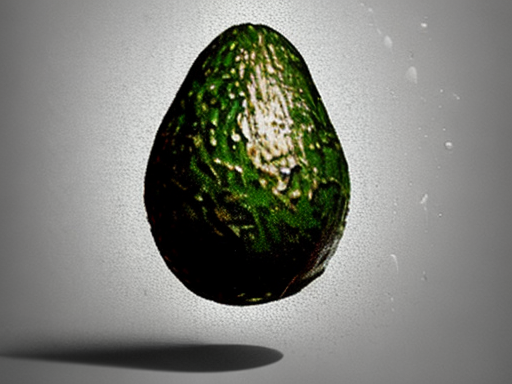Growing an avocado tree indoors can be a fun and rewarding experience, even if you live in a place with cold winters, like Wisconsin. Here is a step-by-step guide on how to grow your own avocado tree indoors:
Step 1: Selecting a seed
- Start by selecting a ripe avocado. The seed inside should be large and dark brown. Carefully remove the seed from the avocado, being sure to remove all of the fruit flesh.
Step 2: Preparing the seed
- Use a toothpick or skewer to poke three holes into the seed. These holes will be used to suspend the seed in water.
- Place the seed in a glass of water, making sure that the holes you poked are facing upwards. The bottom of the seed should be submerged in the water.
Step 3: Germinating the seed
- Place the glass of water with the seed in a warm, sunny location. The ideal temperature for germinating the seed is between 70 and 80 degrees Fahrenheit.
- Change the water every few days to prevent mold and bacteria from growing.
- After about 2 to 4 weeks, the seed will sprout a stem and roots. Once this happens, it’s time to transplant the seed into soil.
Step 4: Transplanting the seedling
- Fill a small container with a well-draining potting mix and make a hole in the center.
- Carefully remove the seedling from the glass of water and plant it in the container, making sure that the stem and roots are covered with soil.
- Keep the soil moist but not waterlogged.
Step 5: Caring for your avocado tree
- Place the container in a sunny location, near a window that receives indirect sunlight.
- Water the tree when the soil feels dry to the touch.
- Fertilize the tree every 2 to 3 weeks with a water-soluble fertilizer.
- As the tree grows, prune it to encourage branching.
It’s important to note that while it is possible to grow an avocado tree indoors, it may not bear fruit. Avocado trees need specific environmental conditions, like high humidity and temperatures between 60-85F, to produce fruit, and it’s difficult to replicate those conditions indoors. However, avocado tree can be a beautiful and long-lived houseplant, and it can be a fun and unique addition to any indoor garden.
Types of Avocados:
The Hass
The Hass avocado is one of the most popular types of avocado. This variety is known for its rich, creamy flavor and its thick, pebbled skin. The Hass avocado is actually a patented fruit, meaning that its parent tree was discovered and propagated by a specific person, and its rights are owned by that person or organization. In this case, the Hass avocado was discovered by a man named Rudolph Hass.
Rudolph Hass was a mail carrier and amateur horticulturist who lived in California in the early 20th century. He discovered the Hass avocado tree on his property in the 1920s and propagated it, patenting the tree in 1935. The Hass avocado tree quickly became popular with growers and consumers alike, and today it accounts for the majority of avocados grown in the United States.
The Florida Avocado
Another popular type of avocado is the Florida avocado, also known as the West Indian avocado or the alligator pear. This variety is known for its large size and smooth, glossy skin. Unlike the Hass avocado, which has a thick, pebbled skin, the Florida avocado has a smooth skin that is easy to peel.
Florida avocados are typically larger in size than Hass avocados, and their flesh is less creamy and more watery. They are less buttery and nutty in flavor and more mild and slightly sweet. They have a higher water content and lower oil content than the Hass avocado, which makes them less calorie-dense but also less creamy.
The Florida avocado is a hardy tree that can tolerate high temperatures and humidity. It is well suited for growing in the southern United States, particularly in Florida, where it gets its name. The Florida avocado is also a good choice for growing in greenhouses, as it can tolerate lower light levels than other avocado varieties.
It’s important to note that Florida avocados are not as popular as Hass avocados because they are not as widely available and also because their taste and texture are different, but it’s still a good option for those who want to try different avocados or for those who live in warmer climates.
Trivia:
- Avocados are actually berries, which are a type of fruit with a single seed surrounded by fleshy fruit.
- The avocado is also known as an “alligator pear” due to its shape and rough skin.
- Avocados were believed to be first cultivated in Mexico and Central America around between 5,000 and 7,000 years ago.
- The ancient ground sloth, which roamed the earth many many years ago, played a key role in the survival of the avocado. The ground sloth helped to spread the avocado seed, which allowed the avocado to thrive in new areas.
- Avocado is a fruit that is high in healthy monounsaturated fats and contains a variety of vitamins and minerals, including potassium, vitamin K, and vitamin E.
- The avocado tree can grow up to 60 feet tall, but when grown indoors it usually reaches a maximum height of 6-8 feet.
- Avocado flowers are hermaphrodite, meaning they have both male and female reproductive organs, but they bloom at different times, which makes it difficult for self-pollination to occur.

